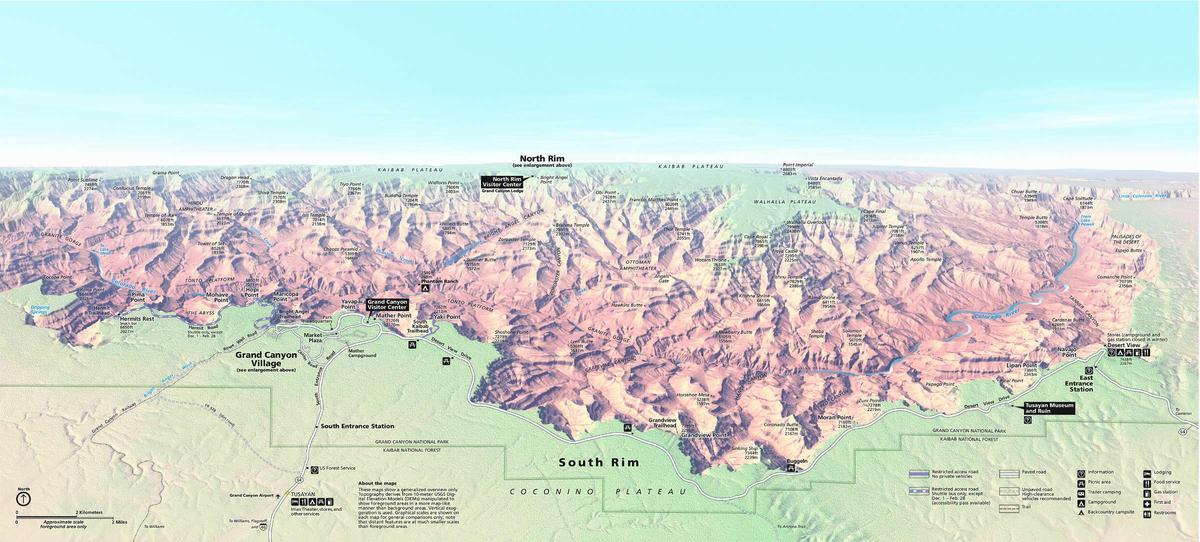Grand Canyon NP--Bright Angel Fault Fossil Beds
Grand Canyon NP--Bright Angel Fault Fossil Beds
Grand Canyon Village, Arizona 86023
Bright Angel Fault Fossil BedsGrand Canyon National Park website
Grand Canyon National Park maps
Tips for Birding
In-depth information is found on the Grand Canyon National Park website.
About this Location
Thousands of feet of exposed rock layers at Grand Canyon provide a veritable playground for geologists to explore. Ancient examples of geologic processes that have shaped our planet over eons are visible here and help us understand similar, modern processes still occurring today. The fossils contained within these rocks add another layer to the story and often provide the clues needed to understand the environments that shaped the landscape so long ago, but finding these tiny, elusive fossils can be difficult in the face of the immensity of Grand Canyon. Thankfully the Bright Angel Fault Fossil beds provide an easy solution. Located on the rim of the canyon, a short walk west of the first shuttle stop on the Hermit Road, access to the site is open to the public.
This site tells the tale of a world far different than the one we see here today. With careful eyes, exposed fossilized remains of creatures from an ancient marine environment 270 million years ago, can unlock secrets and mysteries preserved within Grand Canyon's layers. What will your eyes discover at this one-of-a-kind place along the south rim?
Remember that the fossils we see and enjoy here today are the ones left to us by the visitors of yesterday and it's up to us to leave what we find for tomorrow's visitors and all those that come after. Feel free to explore and handle the rocks and fossils on your own or with a park ranger, but leave them for the next visitor. Please do not mark, mar, or otherwise damage the site during your visit. Take only pictures and leave only footprints.
All fossils within Grand Canyon National Park are protected by federal law and should remain at the site no matter how small or numerous they may seem.
Watch your step and your head when exploring the site. The area is uneven with sudden drops and the branches from the scattered trees in the area are better seen than felt.
About Grand Canyon National Park
See all hotspots at Grand Canyon National Park
Grand Canyon is considered one of the finest examples of arid-land erosion in the world. Incised by the Colorado River, the canyon is immense, averaging 4,000 feet deep for its entire 277 miles. It is 6,000 feet deep at its deepest point and 18 miles at its widest. However, the significance of Grand Canyon is not limited to its geology.
The Park contains several major ecosystems. Its great biological diversity can be attributed to the presence of five of the seven life zones and three of the four desert types in North America.
The five life zones represented are the Lower Sonoran, Upper Sonoran, Transition, Canadian, and Hudsonian. This is equivalent to traveling from Mexico to Canada.
The Park also serves as an ecological refuge, with relatively undisturbed remnants of dwindling ecosystems (such as boreal forest and desert riparian communities). It is home to numerous rare, endemic (found only at Grand Canyon), and specially protected (threatened or endangered) plant and animal species.
Over 1,500 plant, 355 bird, 89 mammalian, 47 reptile, 9 amphibian, and 17 fish species are found in the park.
Content from Bright Angel Fault Fossil Beds and Grand Canyon National Park website
 Grand Canyon Panorama Map
Grand Canyon Panorama Map